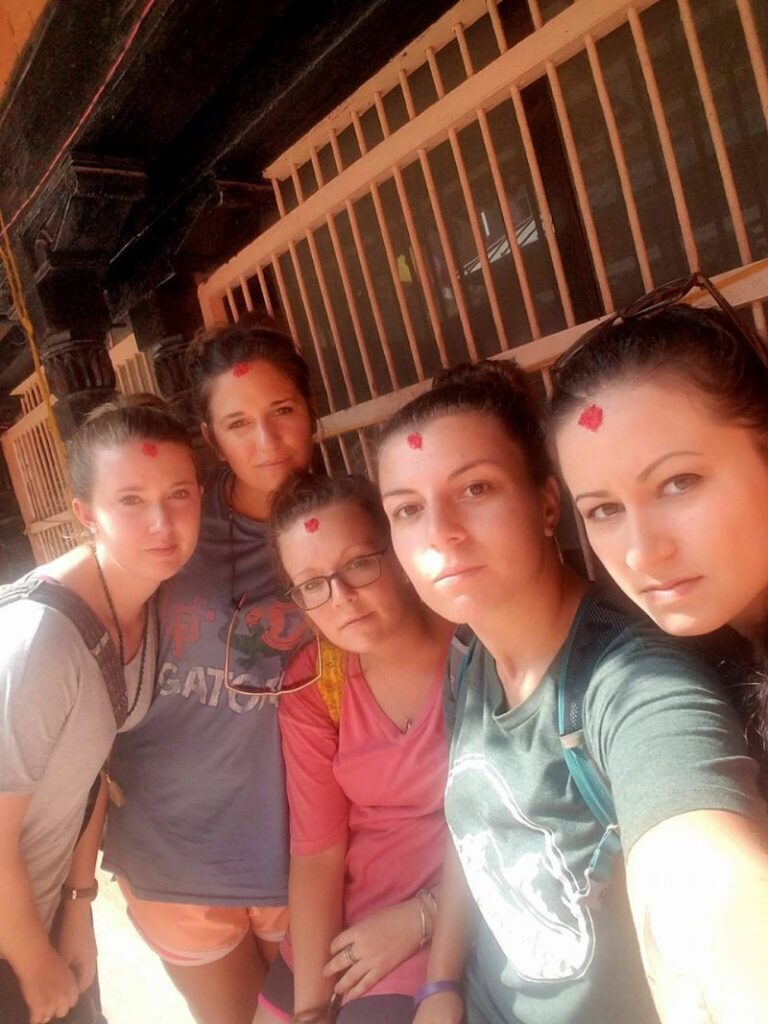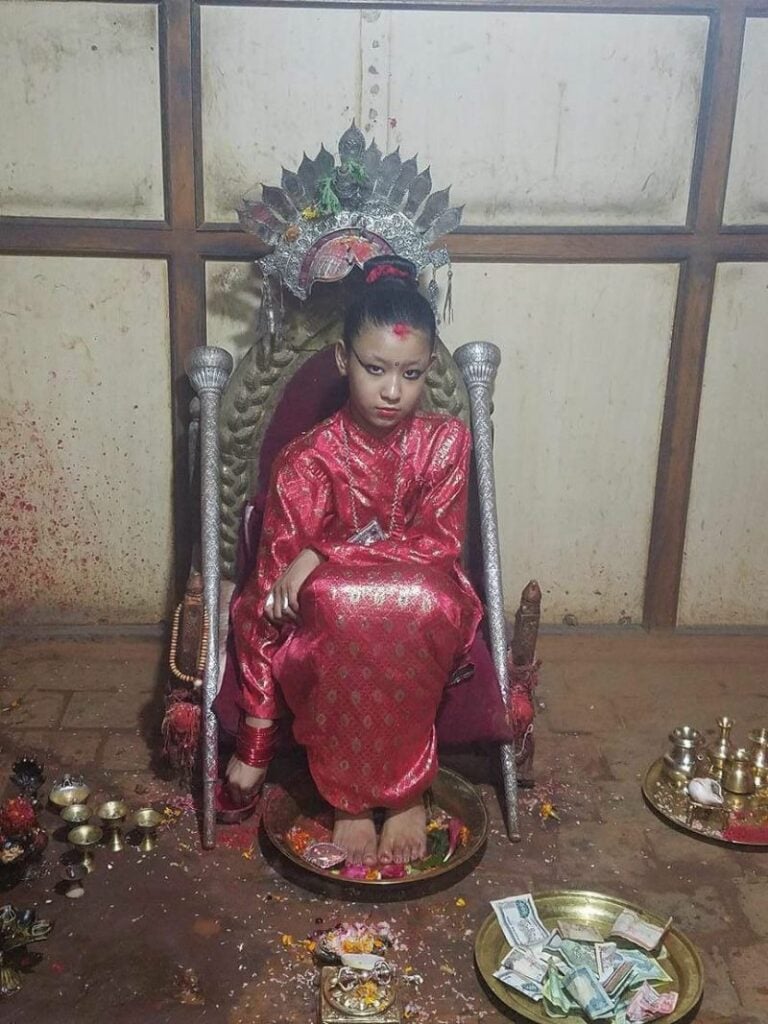We have safely landed in Nepal, and already one thing in particular has stolen my attention.
You need to know that this exists. It’s too important. I warn you though: it’s not good.
In Nepal, I’ve already met a living goddess. No, actually what happened was this: I met a young girl who has had her life stripped away and decided for her, put in a box, and cooped up in a room like a circus animal. And it’s not okay.
[I have spent last week in Nepal doing what is called our “debrief.” Every so often on the World Race, we take a few days “off” to physically, mentally, and spiritually regroup in a new location, as we process and recap what has happened recently (something immeasurably more necessary than I originally thought). We have spent ours in incredible Kathmandu, Nepal. One of my squadmates, Tate, (tatecook.theworldrace.org) has lived in Nepal on mission previously—so instead of resting, on one of our afternoons a few of us elected to taxi to a place she remembered from her time here.]
Here’s what you need to know. “In the Kathmandu Valley young Newari girls called kumaris are worshipped as omnipotent deities.”*
(*Here is a link to a National Geographic article that goes more in depth. I highly suggest it. Reader discretion is advised.)
http://ngm.nationalgeographic.com/2015/06/nepal-kumaris/tree-text
Basically, young girls are selected at an early age through cryptic and most likely traumatic processes to become kumaris, and are revered as persons having divine spirits inhabit them. People can come and visit kumaris and supposedly have good luck blessings bestowed upon them. Both Hindus and Buddhists in the area come to kumaris for their own reasons with their own beliefs.
Kumaris, while an honor to their family for a few years, are a great expense to a family. These young girls are housebound except for festival days a couple times a year. A kumari’s feet may never touch the ground, and she must be carried everywhere. While seated waiting for visitors, her feet lie in a shallow bowl of water and rose petals.
Young girls are only kumaris, however, until they bleed. Whether that is a girl getting her first period or even grazing a finger on paper too quickly—any blood loss means the loss of the power, or shakti, within her.
She may never marry, and ex-kumaris spend the rest of their lives supplemented by the government living with their families.
A few hours a day, she meets members of the public. This is what it’s like to meet a kumari, if you’re like us:
You take your shoes off at a tiny door on the ground floor of an eerily deserted old pseudo-palace. You proceed when given the “okay” and make your way in a small group up an extremely narrow and rickety staircase to what looks like a cement attic. You then walk into the dark and musty room where you approach the kumari one by one, place an offering down as you take a knee, and pray for her (instead of to her) as she places a red mark upon your forehead made of rice and spices. You then stand in dark tension for a few moments as prayers pierce the room, then respectfully walk back out the door you entered from.

Our taxi driver happened to know the kumari’s family personally. Most people are not allowed to take pictures at all, but because we were with a family friend, we were allowed to take a few photos.
Because our taxi driver happened to know the kumari’s family personally, he was open to questions. We learned more about what kumaris do and what their lives look like. We learned she has a teacher that comes a few hours a day. We learned that she is only 8 years old and has been a kumari for several years already.
But when I asked him “What’s her name?” —the only response I got was a laugh and then “She doesn’t have a name! She’s a kumari. Only the parents know her name. She is just ‘kumari’”
Not only has her life been decided for her in a twisted form of what I would call slavery, but even her very name has been stripped from her.
So, we as a group named her. We decided “Hope” would be a name we wanted to speak over her identity.
This is Hope. Please remember her and pray for her. This is her story. But the pen isn’t down yet.









